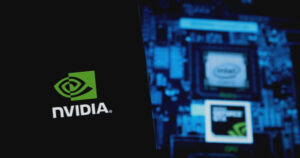Revolutionizing Industrial Automation: Highlights from Automate 2025
By Tony Kim
Published on May 13, 2025
The landscape of industrial automation is evolving rapidly, and nowhere was this more evident than at Automate 2025, North America’s premier robotics and automation event. As industries grapple with labor shortages and the need for efficient operational strategies, AI-powered robotics emerged as transformative solutions.

NVIDIA Takes the Lead
At the forefront of this transformation is NVIDIA, a company increasingly recognized for bridging the gap between AI and robotics. Their partnerships with industry giants like KUKA, Universal Robots, and Vention are not just collaborations; they represent a strategic focus on enhancing manufacturing processes through accelerated computing and AI innovation.
Deepu Talla, NVIDIA’s Vice President of Robotics and Edge AI, articulated this vision, emphasizing the company’s groundbreaking three-computer architecture, designed to optimize robot training and simulation. This facilitates a shift towards software-defined autonomous facilities, repositioning manufacturing for the digital age.
Synthetic Data: A Game Changer
One of the standout innovations showcased at Automate 2025 was NVIDIA’s advancements in synthetic data. Traditionally, training AI systems necessitated vast amounts of real-world data—a time-intensive and costly endeavor. NVIDIA’s open-source robot learning framework, Isaac Lab 2.1, promises to change that narrative drastically.
Powered by the Isaac GR00T Blueprint and supported by the NVIDIA Omniverse, this framework streamlines synthetic data creation, equipping robots to learn diverse tasks more efficiently. This signifies a monumental shift in how AI systems can be trained, paving the way for rapid deployment across various sectors.
Pioneering New Robotics Solutions
Several groundbreaking products launched at the event underscore this trend. Universal Robots unveiled the UR15, their fastest collaborative robot yet, enhanced with NVIDIA’s AI Accelerator. Vention introduced MachineMotion AI, leveraging NVIDIA Jetson for real-time vision processing. Meanwhile, Standard Bots showcased a robust 30kg-payload robot adept at heavy-duty tasks.
KUKA added to the mix with its KR C5 Micro-2, a sophisticated robot controller integrated with NVIDIA Jetson, designed for AI-ready applications. These advancements not only reflect the potential of AI in robotics but also challenge traditional notions of automation efficiencies.
The Rise of AI Agents
NVIDIA’s Metropolis platform further demonstrates the transformative impact of AI in manufacturing through its AI Blueprint for Video Search and Summarization (VSS). This technology streamlines processes such as visual inspections and assembly line monitoring, enhancing productivity while ensuring worker safety.
Noteworthy applications included Siemens’ Industrial Copilot for Operations—a generative AI assistant designed to optimize workflows—and Connect Tech’s real-time hazard detection using drones, powered by NVIDIA Jetson edge devices.
The Future is Here
As AI continues to redefine the contours of industrial automation, NVIDIA’s pivotal contributions at Automate 2025 reveal a future where robots and humans collaborate more intuitively than ever before. The event not only showcased the cutting-edge technologies emerging from NVIDIA but also solidified the company’s role as a leader in advancing industrial capabilities.
For our readers at Extreme Investor Network, this is not just a glimpse into the present but a forward look into how these technologies will shape the manufacturing landscape in the years to come. Stay tuned as we continue to explore the implications of these innovations on your investments and the broader economy.
For more insights, visit our dedicated section on industrial automation trends.

